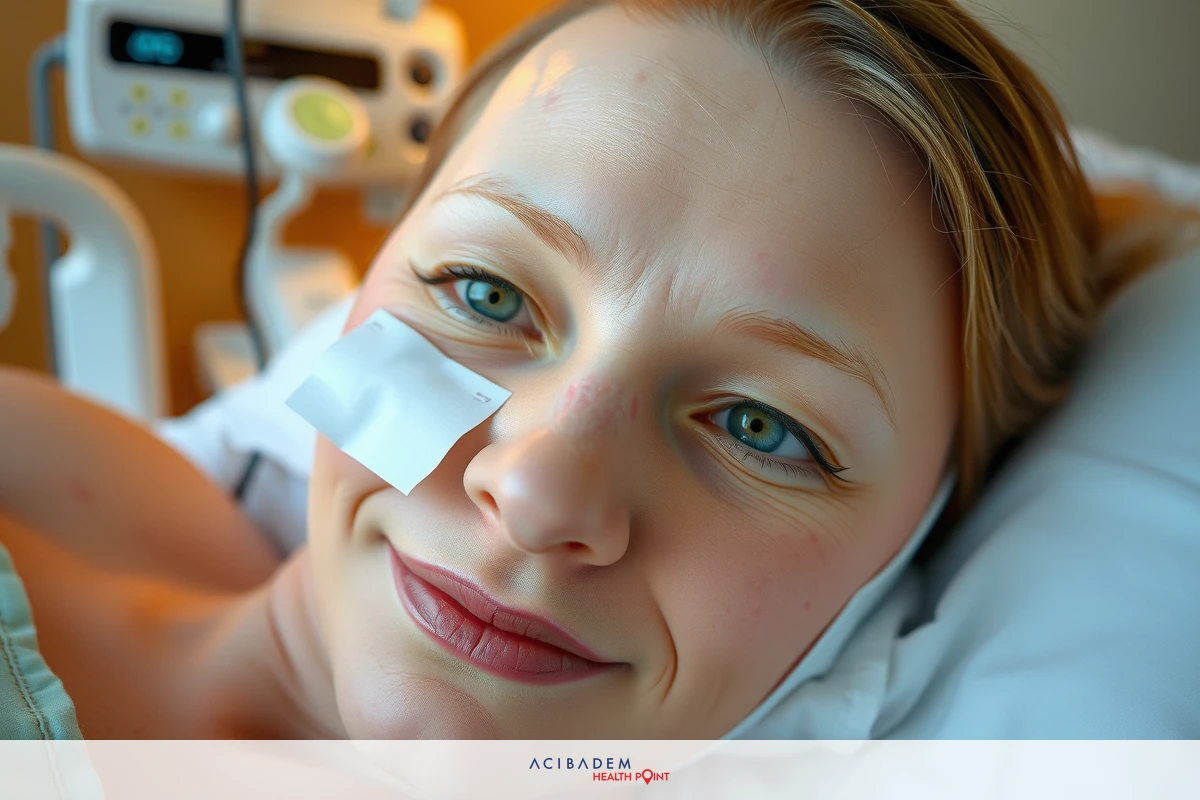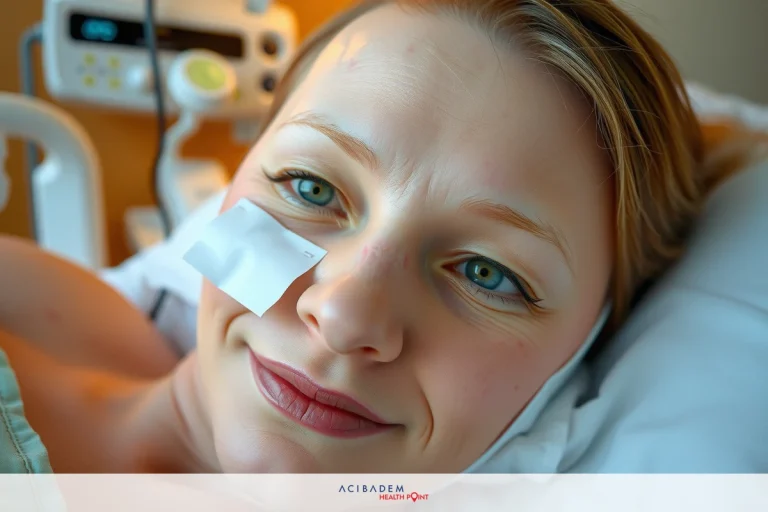What’s The Recovery Time for Rhinoplasty
What’s The Recovery Time for Rhinoplasty Rhinoplasty, holds a spot among the most frequently performed cosmetic operations. It involves reshaping and resizing the nose to enhance facial symmetry or to resolve functional issues like breathing problems. The process of recovery post-surgery is an essential aspect that prospective patients need to consider seriously.
Weaving through the labyrinth of healing after rhinoplasty can sometimes feel overwhelming. From immediate responses post-operation such as swelling and bruising, progressing towards wearing nasal splints, handling congestion, attending follow-up appointments; every stage of recovery has its unique challenges. Yet with proper care and patience, one can successfully navigate this journey towards achieving their desired results.
What’s The Recovery Time for Rhinoplasty Immediate Post-Operative Period
What’s The Recovery Time for Rhinoplasty The days following a rhinoplasty procedure can be interesting, to say the least. Patients are likely to experience some discomfort and pain after surgery, often managed by prescribed medication. Initially, swelling and bruising around the nose and eyes will become noticeable – an expected response from the body after such a significant operation. A crucial part of this phase is ensuring that you take adequate rest and maintain your head in an elevated position while sleeping or resting to help reduce swelling.
Post-operative care plays a pivotal role during this time as it sets the stage for successful healing down the line. Cleanliness cannot be compromised – keeping incisions clean prevents infections that could disrupt recovery or lead to scarring. If nasal packing was used during surgery (a common practice), it’s usually removed within 1-2 days post-operation causing temporary discomfort but offering long-term benefits.
What’s The Recovery Time for Rhinoplasty During these initial few days, one might also notice changes in their sense of smell due to internal swellings inside the nasal passage; however, this condition gradually improves as healing progresses. Depending on individual variations in healing speed along with surgical details like complexity or techniques used during rhinoplasty–some may observe significant improvements sooner than others.
This early period post-rhinoplasty is undoubtedly challenging as patients grapple with physical discomfort alongside visible alterations caused by operative trauma on facial features–yet remember: each passing day brings you closer towards reaching your end goal—a beautifully sculpted nose that amplifies your self-confidence! With proper care, positive mindset & patience—this journey through recovery can indeed transform into an empowering experience rather than a daunting task.
Weeks 1-2: Initial Healing Phase
As patients navigate through the first two weeks post-rhinoplasty, they encounter significant milestones in their recovery journey. During this initial healing phase, noticeable improvements start to emerge as swelling and bruising gradually reduce. However, it’s essential to remember that each patient’s experience can significantly differ based on numerous factors such as individual health conditions or complexities associated with their specific nasal procedure.
During these couple of weeks, patients might still be wearing nasal splints – a measure taken to maintain the new shape of the nose while it heals. Nasal congestion is another common occurrence during this period due in large part to internal swellings which may potentially cause breathing difficulties.
Patients are advised not to blow their noses during these early days after surgery. This precaution helps prevent unnecessary pressure build-up inside the nose which could affect its newly sculpted structure adversely.
While limitations persist concerning strenuous physical efforts like extensive workouts – walking short distances

indoors is generally encouraged for maintaining healthy blood circulation levels crucial towards promoting efficient healing processes postsurgery.
This phase marks an important transition from immediate post-operative responses towards more stabilized recovery progressions. The journey ahead still holds challenges but as one advances through this initial healing phase—signs of improvements start becoming increasingly evident, offering much-needed reassurances that the end goal isn’t too far away!
Weeks 3-6: Continued Healing and Residual Swelling
As the calendar pages flip past the first two weeks following rhinoplasty, patients enter a period characterized by continuous healing coupled with persistent yet diminishing swelling. During this phase, patience is key as residual effects of surgery continue to linger while recovery progresses steadily forward. It’s important to remember that despite visible improvements, complete healing after rhinoplasty takes time and varies significantly from person to person based on individual factors like overall health status or specific details related to their nose surgery.
One encouraging development during this stage involves swelling reduction – an aspect often welcomed eagerly by patients eager for visual confirmation of their improved nasal appearance post-surgery. While external swelling shows noticeable improvement, internal swelling may still persist causing temporary alterations in nasal breathing patterns.
The process of scar maturation also begins around this time when incisions used during surgery start transforming into thin lines which eventually fade over time under optimal care conditions.
Despite experiencing periods marked by slow progress sometimes—each passing day propels you further along your recovery trajectory inching closer towards unveiling the final outcome: a beautifully sculpted nose designed specifically according to your aesthetic preferences combined seamlessly with functional enhancements aiming at improving quality of life!
Frequently Asked Questions
What can I do to reduce swelling post-rhinoplasty?
While some degree of swelling is expected after a nose surgery, there are steps you can take to manage and minimize it. Keeping your head elevated, especially during sleep, can help reduce fluid accumulation in the facial area. Cold compresses applied around (not directly on) the nose may also aid in reducing inflammation and discomfort.
How soon after rhinoplasty can I resume exercise?
Resuming strenuous physical activities too soon after surgery could potentially disrupt healing or cause complications. It's generally recommended that patients wait at least 3-6 weeks before gradually reintroducing exercise into their routine. However, this timeline should be discussed with your surgeon as individual recovery times vary.
Is it normal for my sense of smell to change following rhinoplasty?
Changes in scent perception are quite common immediately after a nasal procedure due to internal swellings inside the nasal passage but typically resolve themselves as healing progresses.
How long does scar maturation take post-rhinoplasty?
Scar maturation is an ongoing process that continues well beyond initial healing stages. Incisions used during surgery start transforming into thin lines within a few weeks following the operation; however, complete fading takes longer - often up to one year or even more depending upon individual variations alongside optimal care conditions.











